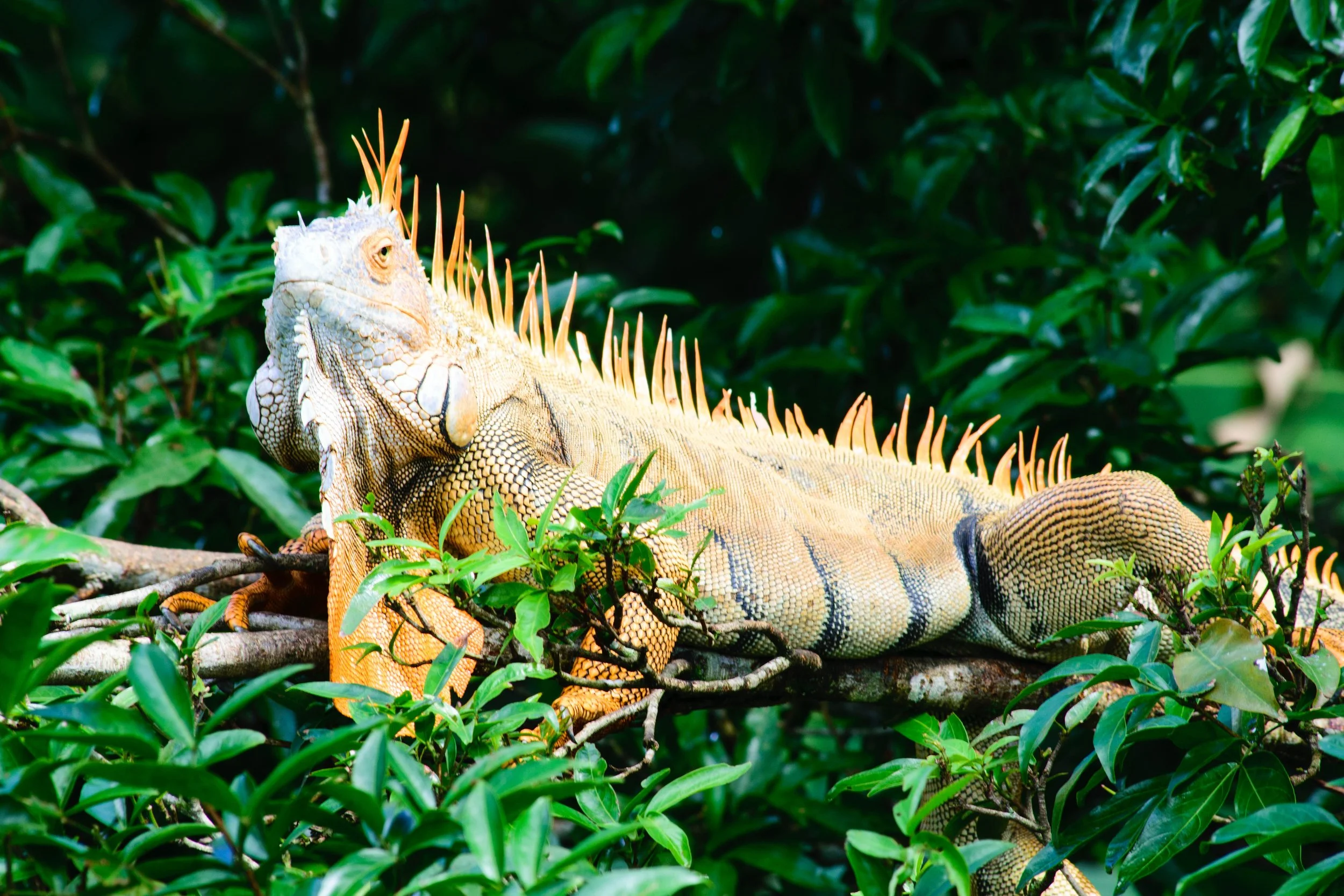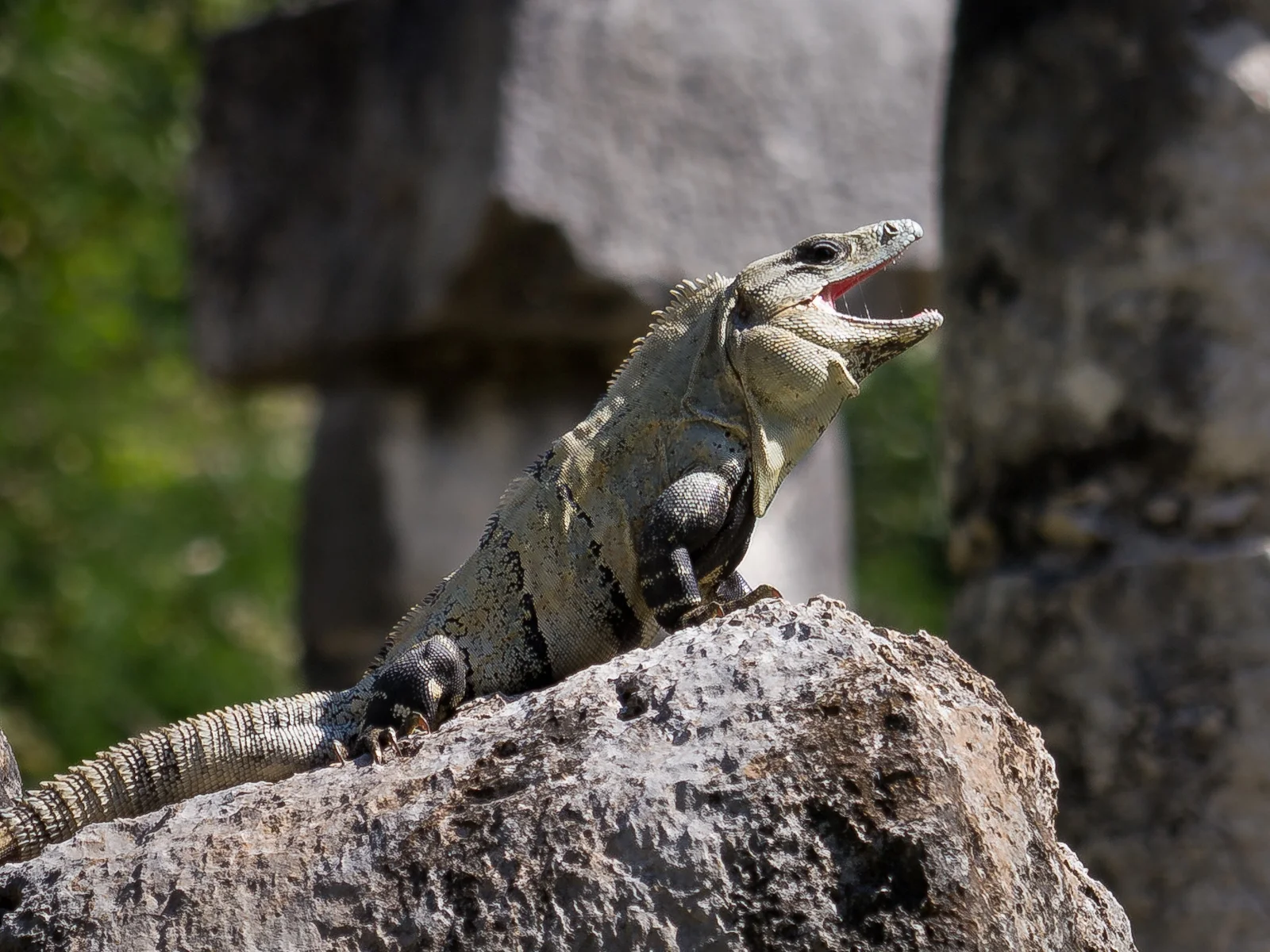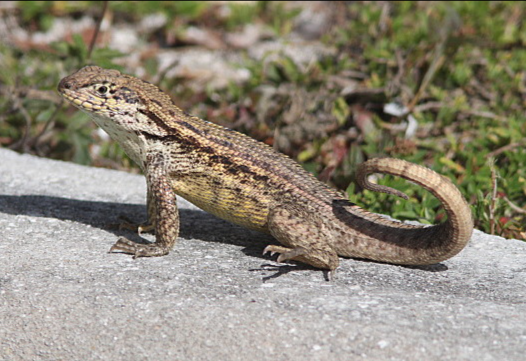Iguanas and other non native lizards in florida
Did you know that there are several different species of iguana, three of which have made South Florida their home?
It is important to recognize the differences of each lizard as each species display distinctive behaviors.
Green Iguana
Green Iguana (Iguana Iguana)
Large lizard, not native to Florida. Hatchlings and juveniles display a bright green coloration. Adults can range in color from green to brown to almost black.
During breeding season (Late fall/early winter), mature male iguanas take on an orange coloration, along with their heavy jowls and dewlap, in order to attract mates. Here in South Florida, there appears to be larger populations near and around bodies of water. Each female green iguana can lay up to 70 eggs annually.
Iguana feces can contain salmonella, which becomes a big health risk for humans and pets, especially if the feces is located in and/or around pools.
Mexican Spinytail
Mexican Spinytail Iguana (Ctenosaura Pectinata)
These iguanas get their name from the distinctive ridged scales on their tails. They are typically brown or grey brown in coloration with a yellow ventral (abdominal) surface.
These iguanas are great climbers and prefer a rocky habitat with crevices to provide shelter. They are opportunistic feeders, primarily herbivorous, however will eat small animals, eggs, and arthropods (insects).
Typically more aggressive* than the Green Iguana and will bite and scratch if cornered so practice caution when approaching.
Black Spinytail
Black Spinytail Iguana (Ctenosaura Similis)
They are difficult to distinguish from Mexican Spinytails, but Ctenosaura Similis has 0-2 scales separating the short crest along the back and tail, 2 complete rows of intercalary scales between the whorls of enlarged scales on the tail, and dark dorsal crossbands.
Black Spinytail Iguanas are primarily terrestrial animals and like to dig burrows. Here in South Florida, these burrows can be found under structures such as houses, sheds, beside pools and seawalls. They are very alert and agile and typically dash to burrows at the first sign of danger.
Similar to their relative Mexican Spinytails, Black Spinytails will scratch or bite if cornered.
Curly-tailed Lizard
Northern Curly-Tailed lizard (Leiocephalus Carinatus)
The second most commonly found non-native lizard in South Florida gets its name from its distinctive curly tail. These lizards are known to scurry away from humans that try to approach them and escape into a crevice/burrow. They have mixed colors of gray and brown and can grow up to 11 inches in length. These lizards are also omnivores and like to eat smaller vertebrates as well as plants.
They are most commonly found in urban areas near the coast but we have seen them stretch inland as well. Their mating season is spring, with females laying eggs in the summer. The curly tail is used as territorial display and a trick for a predator to make it think the detachable curly tail is it’s head.
Image by
https://en.wikipedia.org/wiki/Curly_tailed
Brown Basilisk Lizard
Brown Basilisk Lizard (Basiliscus Vittatus)
The Brown Basilisk, also known as the Jesus lizard, gets its nickname from the ability to walk on water. The “walking” part is a little bit of an understatement for these lizards, as they can literally run on water. Basilisks can grow as large as 2 feet in length. They have the distinctive “dinosaur” look with their head shape, which is a crest that stems from their skull. They are brown bodied with dark brown and yellow lateral lines.
Unlike iguanas, Basilisk lizards are omnivores and eat smaller vertebrates as well as plants. They can usually be seen around canal and lake banks sprawling South Florida. Their mating season is from May through August. Eggs are laid between 3 to 12 at a time in moist holes and require no care after being laid. After about 2 months, the babies emerge and are ready to start feeding.
Image by https://en.wikipedia.org/wiki/Brown_basilisk
Tokay Gecko
Tokay Gecko (Gekko Gecko)
The Tokay Gecko is a large nocturnal hunter, that can grow up to 12 inches long. Native to Asia and some Pacific islands, its natural habitat is rain forest. However you will see them on buildings in south Florida roaming walls and ceilings at night in search of prey. Their diet consists of insects, fruit, and small vertebrates. Tokay’s are aggressive, territorial, and pack a strong bite.
Their skin is generally gray with red speckles, but can change color to blend into their environment. Tokay’s have vertical pupils and an interestingly loud mating call. When threatened or alarmed, they "bark" while opening their mouth in a defensive posture. Females are usually smaller than males and lay clutches of one or two hard-shelled eggs.
Red-headed Agama
This lizard has multiple names, the three most common are red-headed rock agama, common agama, and rainbow agama (agama agama).
Red-headed agamas are native to Africa, India, and Madagascar, however since being introduced in the pet trade you can now find them all over southern Florida. Their size ranges from around 5 to 12 inches in length. They are mainly insectivores, but they have been known to eat small mammals, reptiles and vegetation.
Agamas live in social groups which is made up of a dominate male, about half a dozen females, and other non-dominate males. Agamas usually reproduce during the wet season, but can also reproduce in areas that receive a lot of constant rainfall. After fertilization, the female will dig a hole around 2 inches deep with her snout and claws in sandy, damp soil. Females will lay a clutch of 5 to 7 eggs that hatch within a period of 8 to 10 weeks.
Image by https://en.wikipedia.org/wiki/Agama_agama








